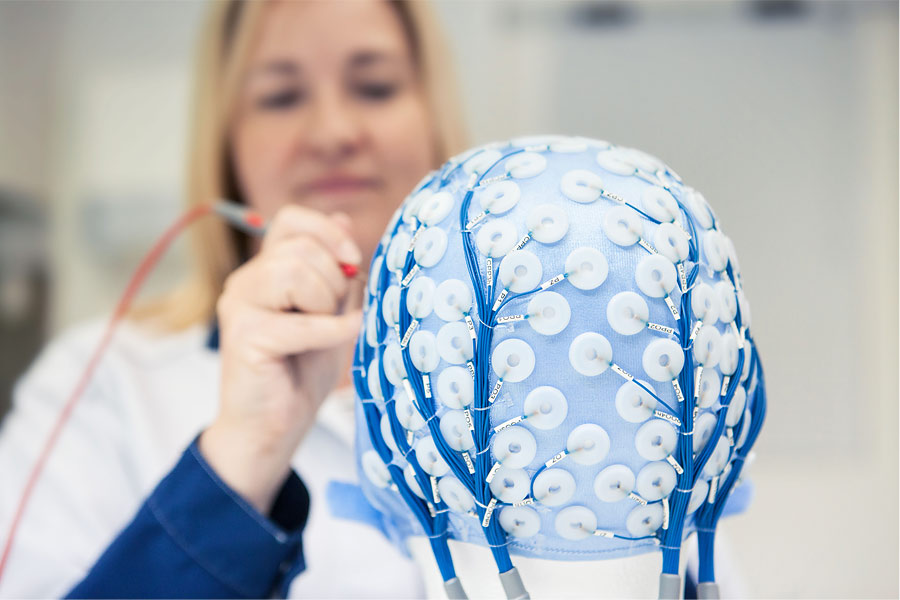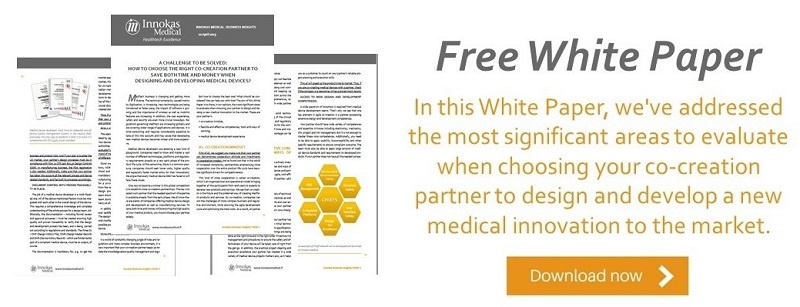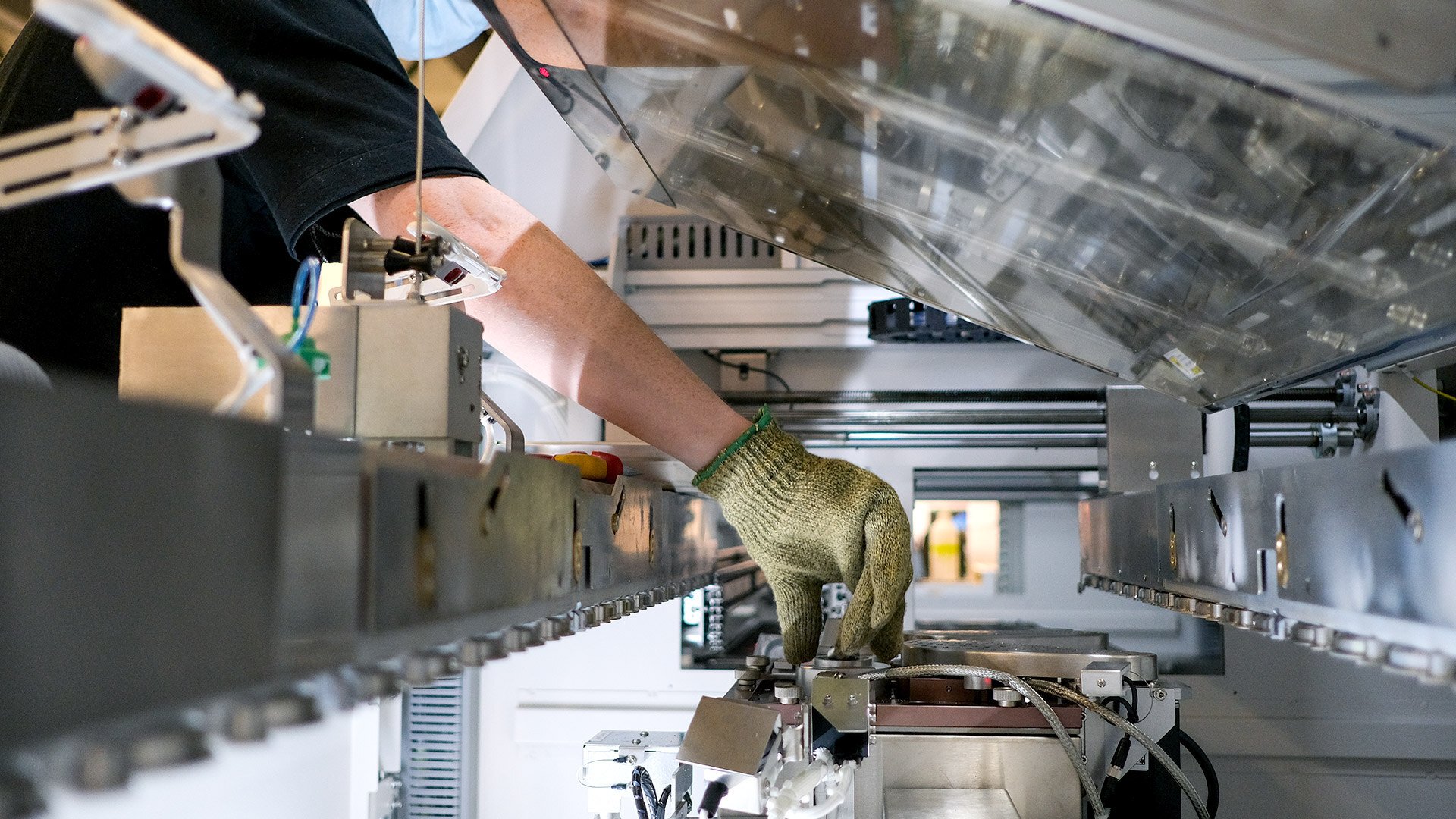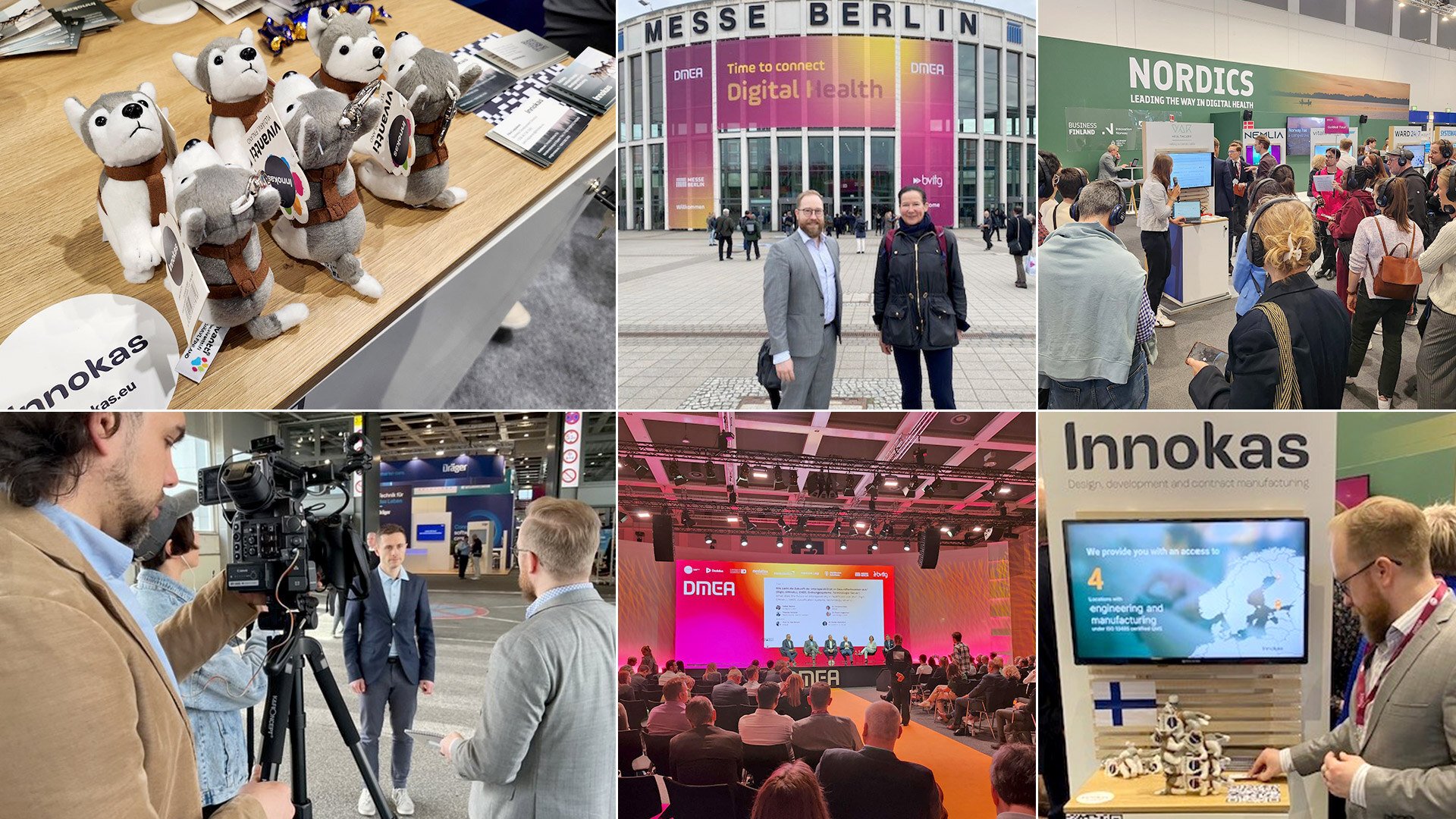There’s a few common trends in the medical field, which have a clear effect to the development of new medical products. The first one is the constantly changing jungle of rules and regulations, which forces companies to stay ahead of the complicated QA&RA world all the time. The second one is related to the fact that everything is getting much more complicated, which is caused mainly by the digitization; different technologies are developed even more rapidly, the impact of SW is growing and wireless as well as mobility features are increasing. In addition, the user experience and safety issues are even more crucial nowadays.
These cause the designing and developing new medical devices becoming slower and more expensive as companies need to know and master a significant number of different kind of technologies and platforms. At the same time there is a common pressure for every company in the field: the pressure to get certified, high quality medical products to the market as quickly as possible.
That’s why we’ve started to look and define the elements, which influence how to achieve more agile medical device development cycles, while at the same lowering the total costs and ensuring the high quality of your product.
One way to become a winner in this global competition is to establish close co-creation partnerships. We all know there are plenty of companies offering medical device design and development as well as manufacturing services. To save both time and money while ensuring the high quality of your medical product, you should choose your partner wisely.
In this blog post we’re discussing about top four facts with WHYs – which are, in our opinion, important ones to consider when choosing your co-creation partner to design and develop your medical device.
#1. Your partner’s domain specific maturity
Developing medical devices requires variety of technical competences, customized tools, compliant processes and best practices as well as understanding of regulatory requirements and user environments. Thus, if you are co-creating medical devices with a partner, check if the company is a newcomer or has a proven track record.
But why is the domain specific maturity that important?
The deep practical experience your partner has allows you to focus on your own core strengths. The practical project steering and execution excellence your partner has created in a wide variety of medical device projects matters as it will help you as a customer to count on your partner’s reliable project planning and execution skills.
To achieve more agile development of next generation medical devices, we see that companies should put even more focus on the idea and conceptualization phase: with the right choices made already at that phase, the more agile project schedules can be achieved. Therefore, a partner with deep practical experience is able to help you to take all the aspects of medical device design and development into account right from the start. Your partner should be able to advice and challenge you on initial technology choices, intended use and requirement specifications already at the idea phase. Additionally, proactive risk management and procedures to ensure the safety and effectiveness of your device are something that must be taken care early in the phase.
And this all will speed up the product time to market because it will help you to ensure that the right things are being done at the right time and in the right order.
#2. Your partner’s cross-functional expertise gained by full-service offering
We all know that a wide spectrum of knowhow is required from medical device development teams. That’s why we see that one key element in agile co-creation is a partner possessing extensive design and development competences, like electronics, mechanics, SW, project and risk management. Additionally, we see that your partner needs to be able to apply usability, biocompatibility and other specific requirements to ensure compliant outcome.
But what we see really makes the difference is your partner’s cross-functional expertise gained by full-service offering. This is because according to our experience, the agile path from idea to high-quality design, regulatory approvals and finally cost-efficient manufacturing is only possible when you have access to all the needed competences throughout the device life cycle.
But why is the cross-functional expertise that important?
As an example, decisions that are made during the product design process will have a huge impact on the manufacturability and total cost of the product. The same applies to regulatory know-how that is needed; you should recognize the regulations affecting the whole product life cycle already in the idea phase of the design. This is because, e.g., the intended use and the classification of the device have a significant impact on the laws, standards and regulations as well as on the needed documentation the authorities require.
Your full-service co-creation partner can offer you the early involvement of e.g. manufacturing, sourcing as well as quality and regulatory functions. This will help to avoid nasty surprises in the later phases of the project, shortens the time to market and reduces the total cost of the product.
#3. Your partner’s modern tools and ways of working
Pay attention whether your partner is investing in the modern, standardized working methods. For example, modern tools and high-quality processes are something that are truly needed – and in which the companies should invest in to achieve agility. Additionally, using modern product development models, which take the co-creation, more complex business environment and constantly increasing regulatory requirements into account, matters. These modern ways of working mean more agility, more transparency and more value.
One approach to shorten the development cycle of medical products is to apply three commonly known methodologies of product development to medical devices: Design Thinking, Lean Start-up, and Agile. According to our experience, medical domain can greatly benefit from these three methodologies by incorporating the customer’s voice as well as speed and agility from the development of digital services, where these methodologies have been widely used. This vision emphasizes co-creation throughout the whole design and development phase. (wp linkitys)
But why are modern tools and ways of working that important?
Investing in the best practices and ways of working and in the modern tools will usually ensure more agile, cost-efficient and flexible ways of operating for all parties - especially in the medical domain where compliance is not a matter of opinion. But also remember that it is not just the tools that are important - it is HOW they are used, trained and kept up-to-date with changing business and regulatory requirements.
#4. Your partner’s strong quality and regulatory knowledge and experience
Bringing a medical or an IVD device to market can be a nightmare of confusing regulatory standards and regulatory authority certifications that must be complied with and which must be integrated into the design and production of the device. Taking all the national and international quality and other regulations into consideration is time-consuming – and it requires considerable expertise. This is because the standards and regulatory requirements are very strict and complicated as well as very controlled, both in Finland and in international markets.
Your partner’s strong expertise from the quality management system and the procedures of it guarantee that the products fulfill all the needed regulations, standards and requirements. Additionally, if your partner company has gathered a strong knowledge from medical device related regulations and standards of different market areas, it will make a difference.
But why is the quality and regulatory knowledge and experience that important?
The main purpose of enforcing standards and regulations in the medtech and healthtech sector is to protect both the patients and the users by ensuring the safety and effectiveness of the devices. This is actually the most important aspect in the quality assurance process in medical business - it is the way to avoid patient injuries or even deaths. Companies must design and develop devices that does not cause any hazards in end-uses.
We also all know the fact that in the medical domain, the quality and regulatory compliance is not a matter of opinion – it is a mandatory obligation. Thus, one clear reason for the importance to follow and meet the rules and regulations is that if you won’t meet them you’re not able to enter the certain market you’re trying to enter in. In other words, you cannot market and sell your device if it does not fulfill the needed criteria.
Thus, if you’re co-creating medical devices with a partner, make sure that your partner has a certified (ISO 13485) Quality Management System in place, to mitigate both business and product risks. And if your plan is to enter the US market, your partner’s design processes must be in compliance with FDA 21 CFR part 820.30 Design Controls (QSR). You should also evaluate if your partner company has gathered good command of medical device related regulations and standards of different market areas you’re planning to enter in. Additionally, make sure that your partner has taken into account all the relevant process and device related standards, and has built its processes accordingly. Your partner should master the documentation creation and control with proven traceability as well.
The discussion above related to the tips on selecting the most optimal co-creation partner to develop your medical device was only a small view to the topic. To get even more detailed overview and description about the topic, you should download our free White Paper where we share, in our opinion, the most significant areas to evaluate when choosing your partner to design and develop a new medical innovation to the market – with deeper discussion. Collect yours by following the link!











